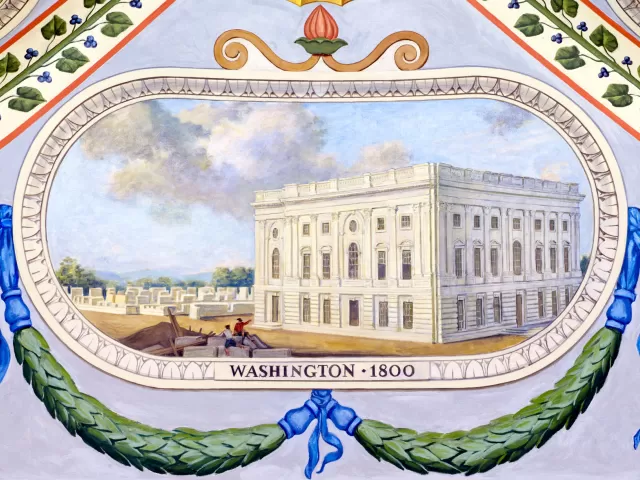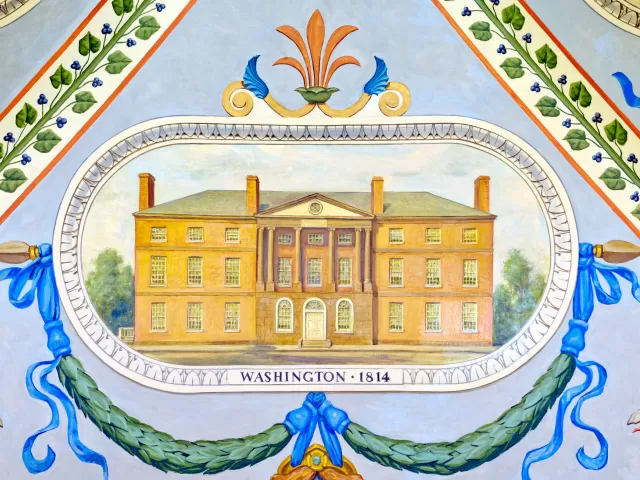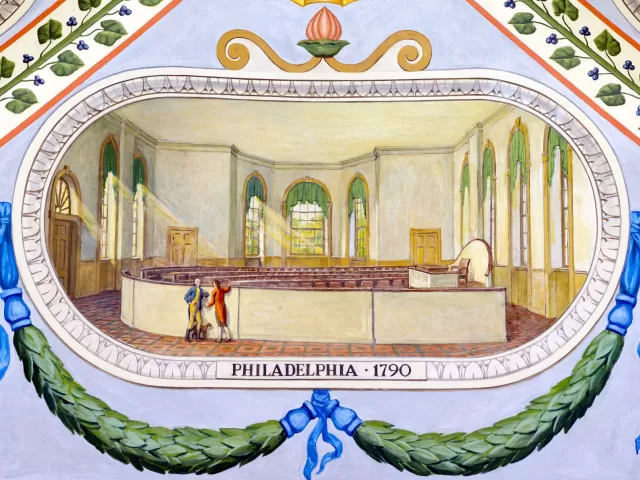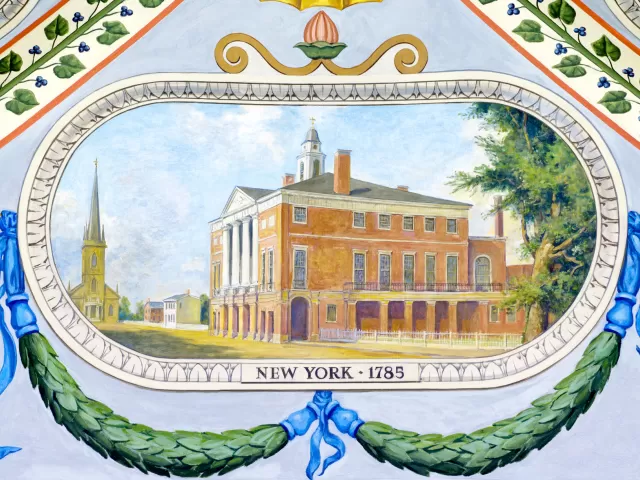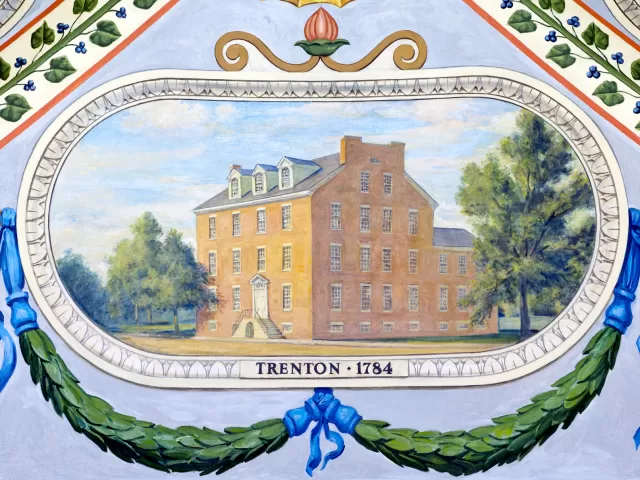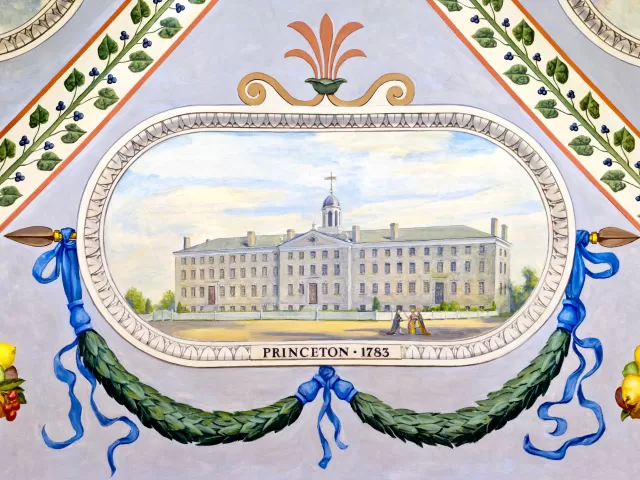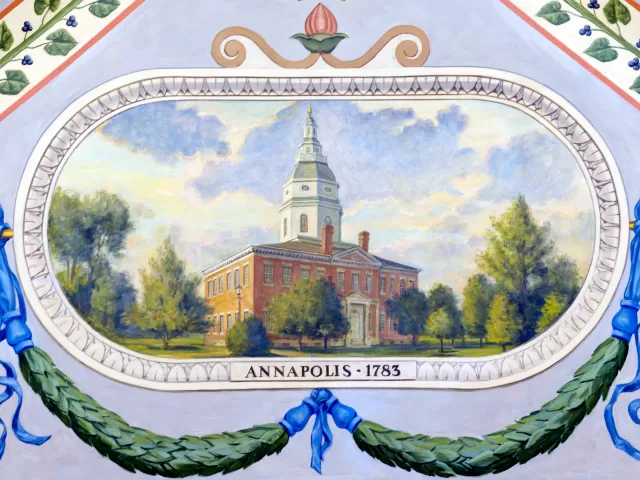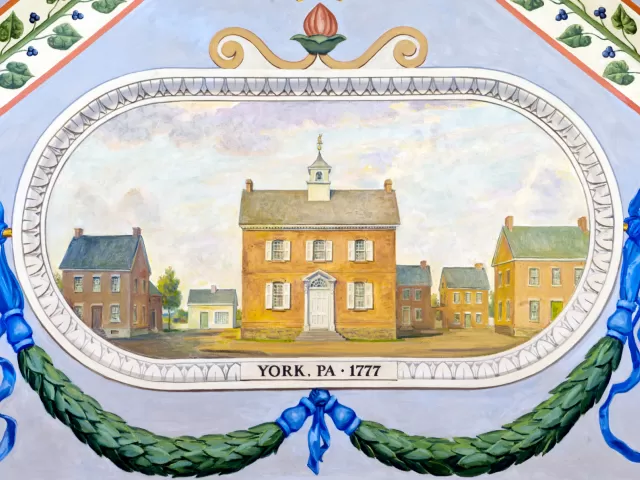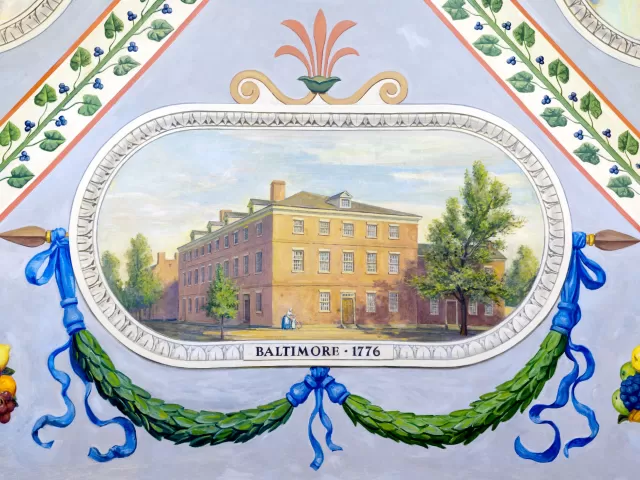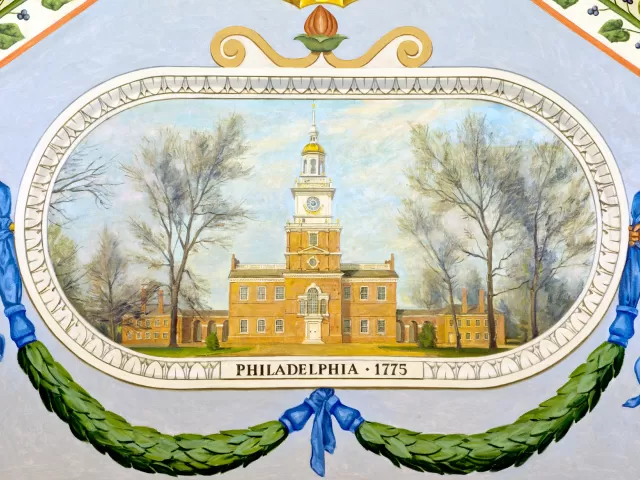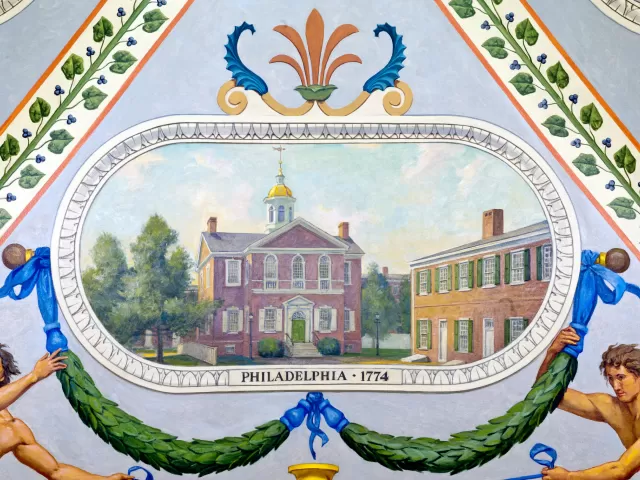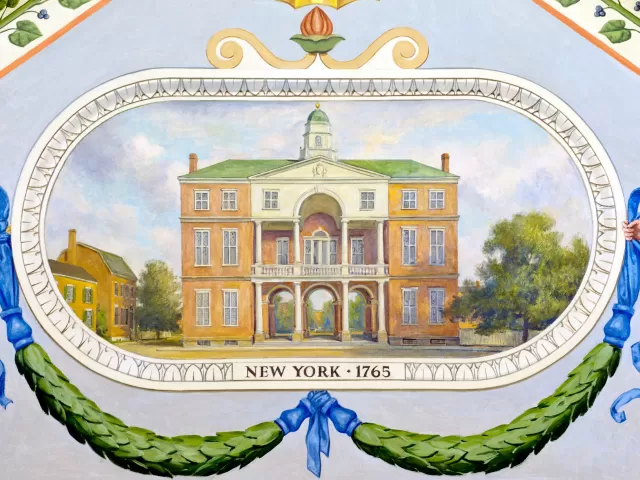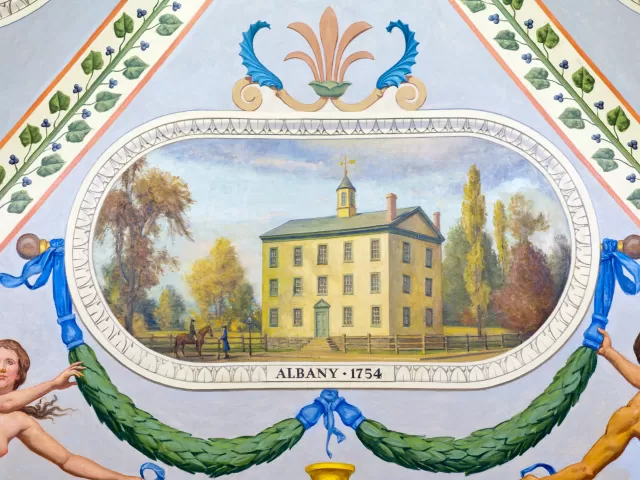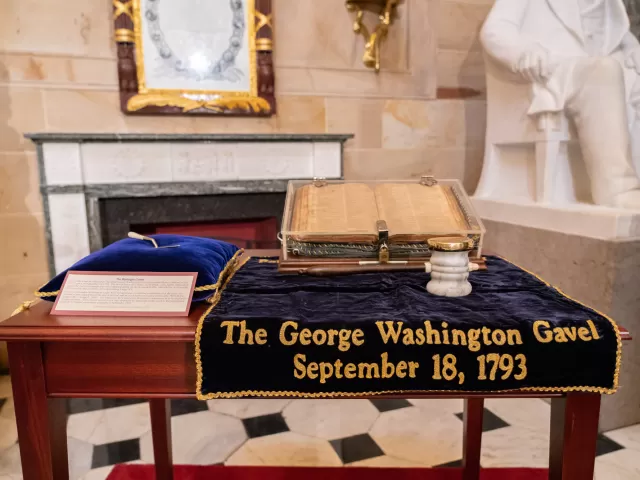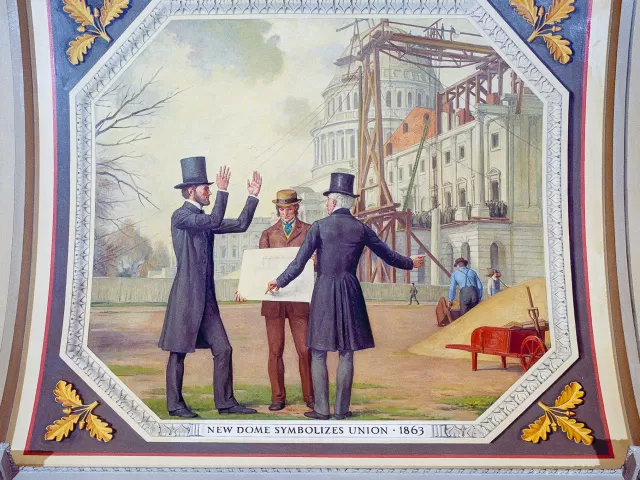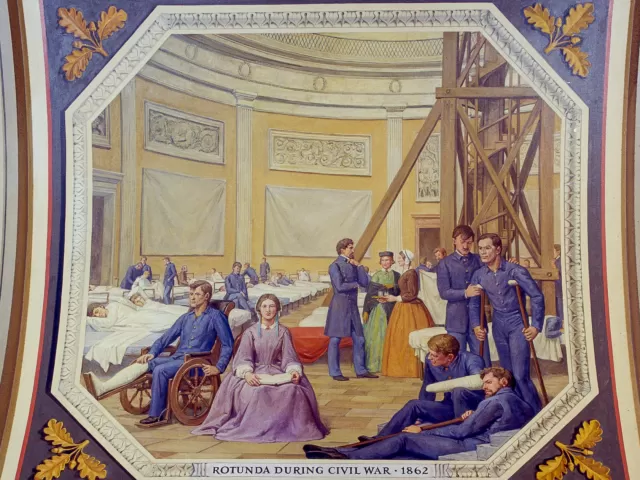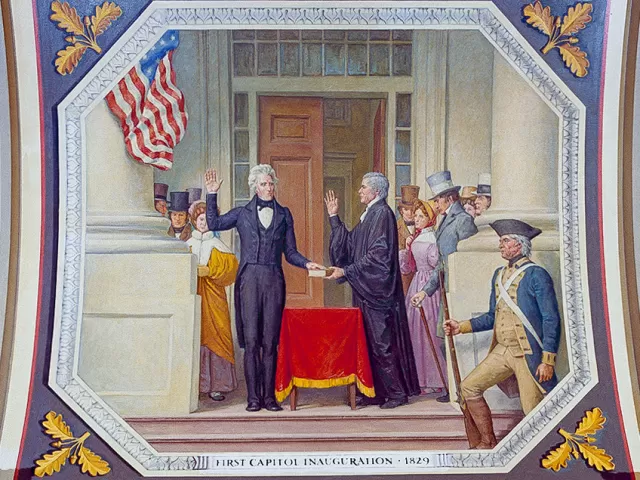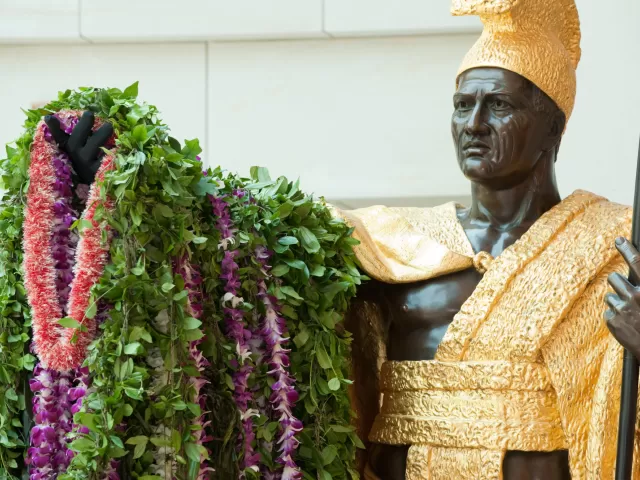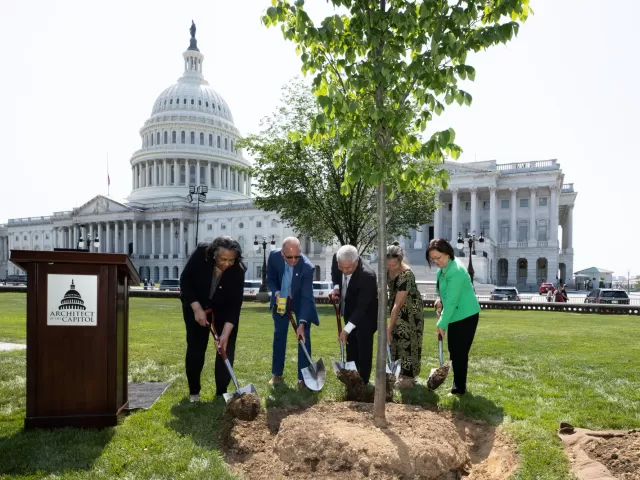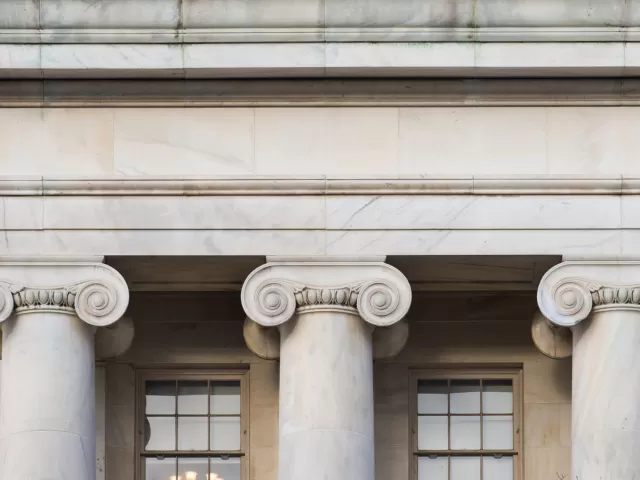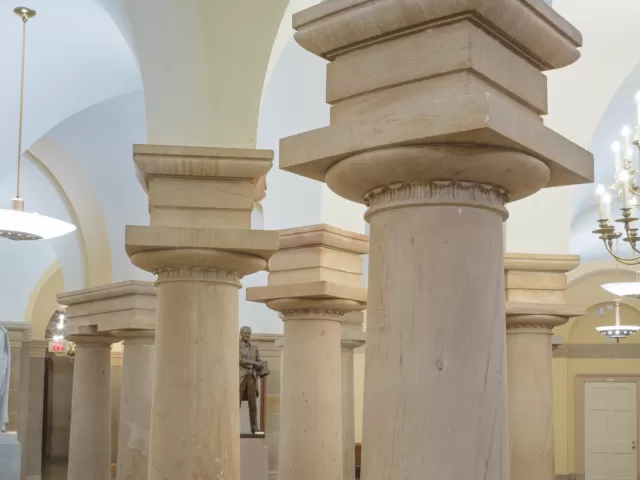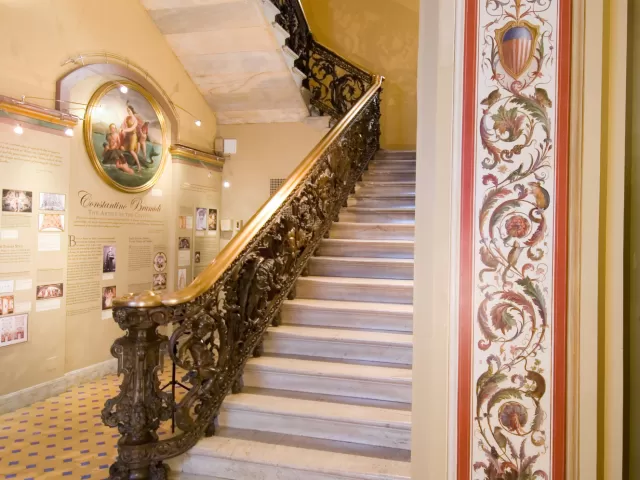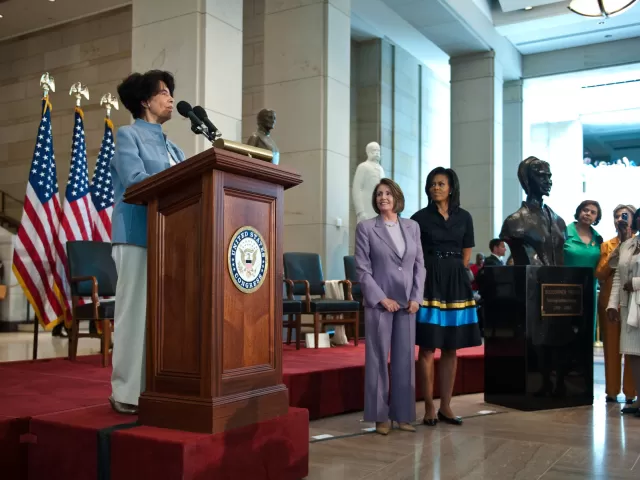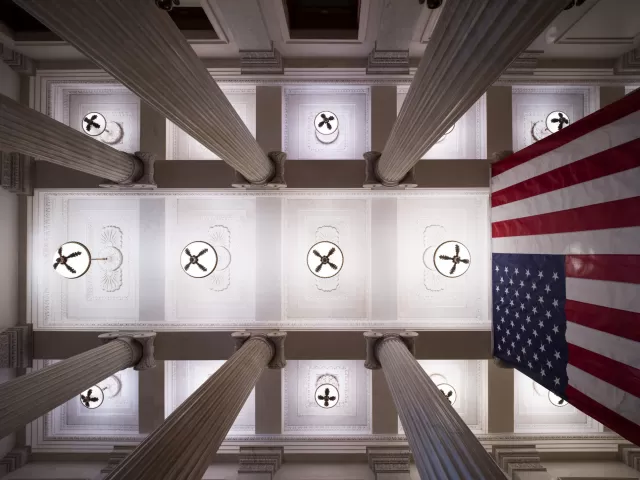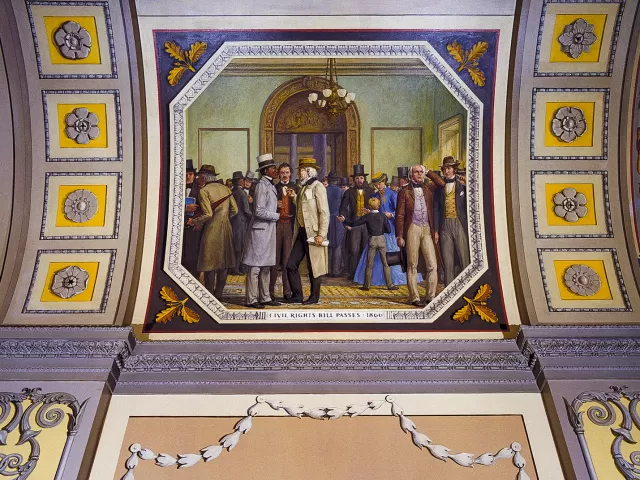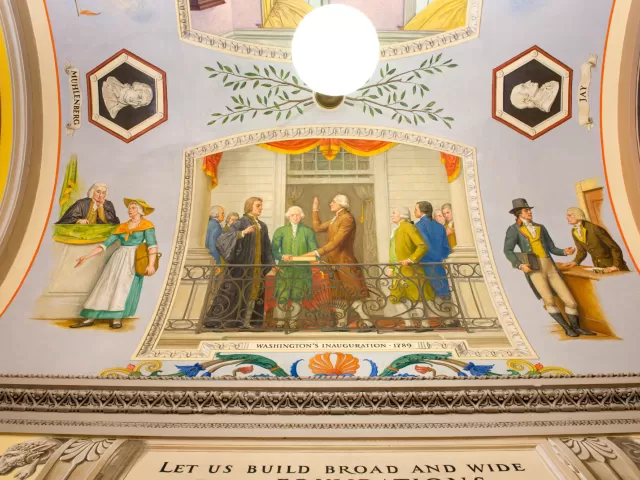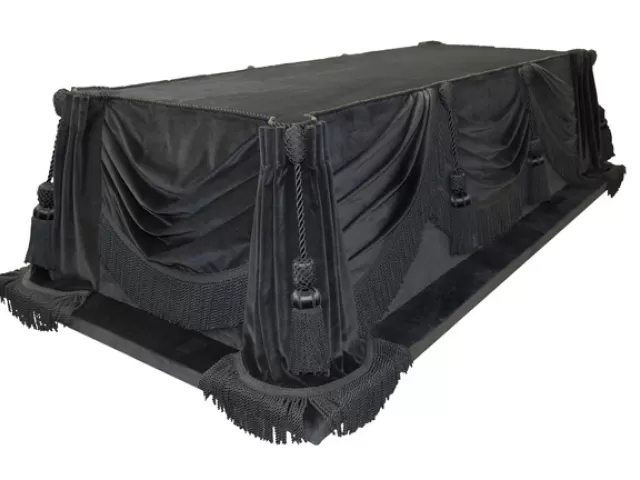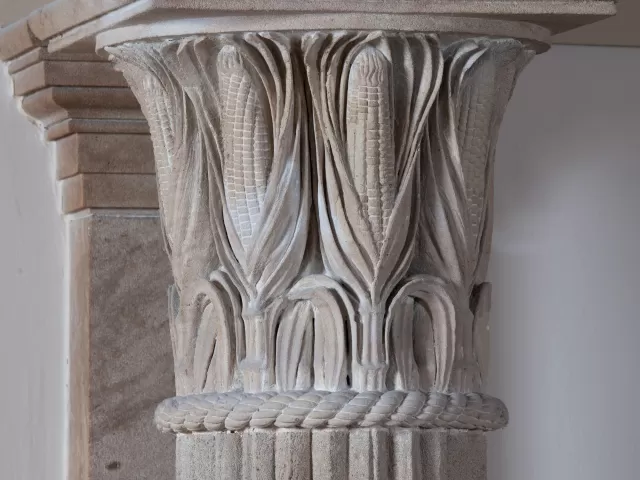Displaying 121 - 150 of 536 Clear
Highlight
Only the north (Senate) wing of the U.S. Capitol Building was ready for the Congress by 1800. As construction continued on the rest of the building, this wing accommodated the Senate, the House of Representatives, the Supreme Court, the Library of Congress, and the district courts.
Highlight
In August 1814, during the War of 1812, invading British troops burned the U.S. Capitol and other buildings in Washington. That fall, Congress met in the Patent Office building (now the National Portrait Gallery/Smithsonian American Art Museum).
Highlight
Following passage of the "Residence Act," which required the government to move to a new city on the Potomac River in 1800, Congress moved to Philadelphia for a 10-year stay at Congress Hall.
Highlight
The Congress returned to New York's old City Hall in 1785, 20 years after the meeting of state delegates in that building. Here, in 1789, George Washington was inaugurated president and the first Congress under the Constitution was convened.
Highlight
In November and December 1784 the Congress met in the French Arms tavern in Trenton, New Jersey.
Highlight
In the summer of 1783 Congress moved to Princeton, New Jersey, where it met in Nassau Hall of the College of New Jersey (now Princeton University).
Highlight
The next congressional meeting place was the State House in Annapolis, Maryland. It was here that George Washington resigned his commission as commander in chief of the Continental Army.
Highlight
After leaving Baltimore the Congress met briefly in Philadelphia but soon moved to York, Pennsylvania, where it met for nine months in the old Court House.
Highlight
The Congress moved to Baltimore, Maryland, a safer haven during the war than Philadelphia, after the Declaration of Independence. It met in this rented building, since known as Old Congress House; the building was destroyed by fire in 1860.
Highlight
On July 4, 1776, delegates to the second Continental Congress issued the Declaration of Independence at Philadelphia's State House, now known as Independence Hall.
Highlight
The first Continental Congress met at Carpenters' Hall in Philadelphia, Pennsylvania, where they agreed to suspend trade with Great Britain.
Highlight
The Old City Hall in New York was the meeting place for delegates from nine colonies, who drew up a Declaration of Rights.
Highlight
At the old Stadt Huys in Albany, New York, colonial representatives devised a plan for a union of the colonies. The plan was ultimately rejected, but it became a guide for the later federal government.
Highlight
Contemporary Masonic practice included the laying of an inscribed metal plate along with a cornerstone. Caleb Bentley, a Quaker clockmaker and silversmith who lived in Georgetown not far from Suter's Fountain Inn, where the commissioners held their meetings, made the silver plate for the Capitol
Highlight
Thomas U. Walter, who was hired as architect of the Capitol extensions in 1851, also designed the building's new cast-iron dome. In this mural Walter (center, in brown coat and top hat) shows his dome design to President Abraham Lincoln. About the Cox Corridors Murals The first floor of the U.S
Highlight
For about six weeks in the fall of 1862 the Rotunda (as well as other chambers and hallways) was used as an emergency hospital. Among the nurses who served here were Dorothea Dix and Clara Barton, later the founder of the American Red Cross. About the Cox Corridors Murals The first floor of the U.S
Highlight
Andrew Jackson, the first president to be inaugurated outdoors at the Capitol, is shown taking the oath from Chief Justice John Marshall. This ceremony on the east front portico began a tradition observed by most presidents until 1981, when inaugurations were moved to the west front. About the Cox
Basic page
This list includes works in the collections under the care of the Architect of the Capitol, U.S. House of Representatives and U.S. Senate, and is not exhaustive.
Highlight
U.S. Capitol Grounds memorial tree to honor the life and service of Senate Librarian Leona Faust sponsored by Senate Majority Leader Charles E. Schumer and Senate Minority Leader Mitch McConnell.
Highlight
Corinthian columns are the most ornate, slender and sleek of the three Greek orders.
Highlight
The Ionic column is typically identified by its capital, which includes large paired spiral scrolls, or volutes.
Highlight
Doric columns typically have a simple, rounded capital at the top; a heavy, fluted or smooth column shaft; and no base. Flutes are vertical, parallel channels that run the length of a column.
Highlight
During the mid-19th-century expansion of the U.S. Capitol, which added the House and Senate extensions, four private staircases were installed to allow representatives and senators to move quickly between their second-floor chambers and the building's first floor. Two are located near the House
Basic page
Examples of African American artists with works featured in the United States Capitol and congressional office buildings.
Basic page
Accomplishing these initiatives is critical to laying the foundation for the Architect of the Capitol's (AOC) long-term success and providing a governance framework that supports effective management. Each strategic objective aligns with multiple strategic goals.
Highlight
The 1866 civil rights bill, which prohibited discrimination on the bases of race or previous condition of slavery, prefigured the 14th amendment to the Constitution. In the foreground of the mural, former slave Henry Garnet is shown speaking with newspaper editor Horace Greeley, who supported
Highlight
George Washington was sworn in as the nation's first president on April 30, 1789, on the balcony of Federal Hall in New York. The mural depicts (from left to right) Robert R. Livingston, chancellor of the state of New York, administering the oath; Secretary of the Senate Samuel Otis holding the
Basic page
The Architect of the Capitol's (AOC) annual Performance and Accountability Report (PAR) provides the results of the AOC's financial performance each fiscal year (FY). It demonstrates the AOC's commitment to the accomplishment of its mission and accountability for its financial resources to the
Highlight
The Lincoln catafalque is a platform constructed in 1865 to support the casket of Abraham Lincoln while the president's body lay in state in the U.S. Capitol Rotunda. It is a simple base of rough pine boards nailed together and covered with black cloth.
Highlight
Some of the oldest and most famous interior features of the Capitol are located near the entrance to the Old Supreme Court Chamber. These six corncob columns, designed ca. 1808 by Benjamin Henry Latrobe, are among the most unusual and significant architectural works of the early Republic.
